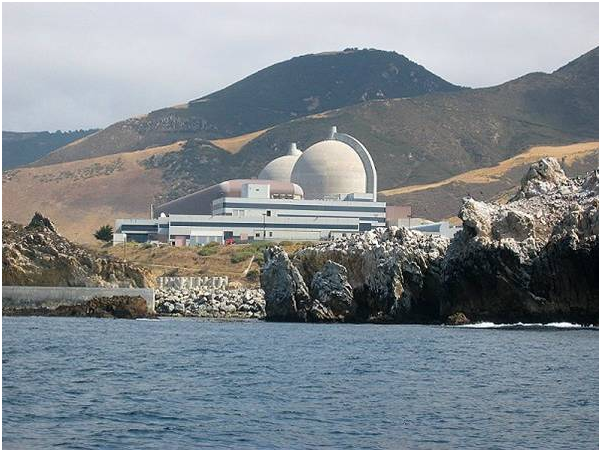The recent major quake that shook California has increased concern over the ability of the last nuclear power reactor in California to withstand strong earthquakes. The Diablo Canyon Power Plant in San Luis Obispo County has been criticized before on the grounds that it is not safe to operate because of its proximity to geological faults.
When construction began in the 1960s, there were two known faults in the area. A year after construction began, another big fault called the Hosgri Fault was discovered offshore near the site of plant. The Hosgri Fault had caused a 7.5 quake in the past. Critics demanded that the plant be built to be able to withstand another 7.5 quake. After a heater public debate, the plant was rebuilt to be able to withstand another 6.5 quake. The plant was constructed with that possibility in mind.
In January of 2009, a new fault that was named the Shoreline Fault was discovered offshore from the Diablo plant seven miles closer than the Hosgri Fault. This fault is not thought to be as serious a threat to the plant because it is estimated that it could only generate a 6.5 quake, one tenth as powerful as the Hosgri could generate. On the other hand, research is still going on with respect to exactly where the new fault extends and one expert raised the possibility that it could run under the plant although this has been denied by the plant operators. If the fault does run under the reactor, it is possible that a major quake could crack the ground open and shatter the Diablo nuclear reactors along with the spent nuclear fuel pools. This would be a horrendous disaster.
A 2013 Nuclear Regulatory Commission report on the Diablo Canyon plant concluded that " the nearby Hosgri, Shoreline, Los Osos, and San Luis Bay fault systems are capable of producing ground motions that exceed the plant’s safe shutdown precautions." The report questions whether the plant's critical equipment is capable of withstanding the shaking that these faults could cause. The conclusion of the report was that the reactors at Diablo Canyon should be shut down until tests could be conducted that would should that the plant was able to withstand possible quakes from the fault systems in the area.
What actually destroyed the nuclear plant at Fukushima was the tsunami that followed the offshore earthquake in the area. Although the Diablo plant is eighty five feet above sea level, there is still concern that a tsunami caused by one of the offshore faults could endanger the plant. While the Diablo plant does supply about seven percent of the electricity in California, the repercussions of a nuclear disaster at Diablo Canyon would cost much, much more than the loss of the electricity now being generated by the plant.
Diablo Canyon Nuclear Plant:
